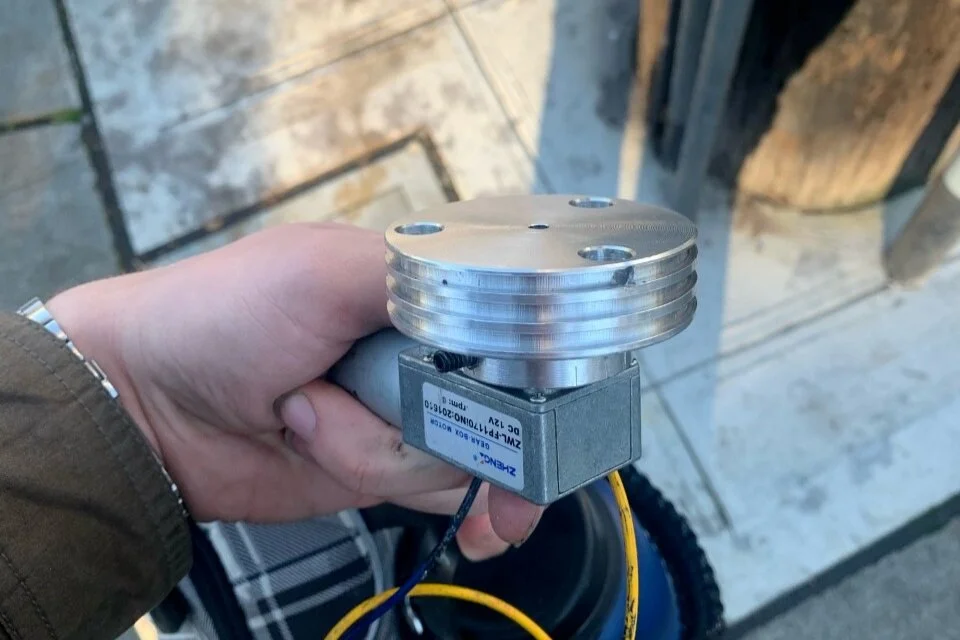
Variable Pitch Wind Turbine
Modernizing a Classic Design.
As part of my ASE curriculum, I was tasked with building a set of wind turbine blades in 4 weeks. Leveraging my skill in competitive sailing, I choose to make a set of variable pitch wind turbine blades which had only been tried once before in the program’s history and had failed. Using a set of broken hand carved wood blades, control flaps structures were 3D printed with aluminum spars and covered with Kevlar reinforce Mylar sail cloth to be integrated into the blades. I then machined a center hub out of a block of 6061 aluminum and attached it to the radio-controlled high torque servo with a set screw. Pulleys were made from stainless cotter rings for which Dyneema control lines could be fed through and attachments were made with sailing shackles as to reduce friction and improve reliability. Upon testing the blades at the Whidbey Island SPU Research Facility, the blades preformed as expected in 3-15mph of wind, having characteristics of low stall speeds and a wide range of compatible wind speeds.
Achievements
Fully operational set of turbine blades
Field tested at SPU Whidbey Island Research Facility
Troubleshooted previous manufacturing errors and iterated design to make blades both fully functional and mechanically reliable for future classes
Met or exceeded all project specifications
Title: Individual
Construction
Each retrofitted blade has a flap which changes the pitch of the blade. Flaps are perpendicular to the apparent wind for optimal efficiency and therefore must be continuously adjusted as the blades begin to spin faster.
Custom machined aluminum center hub provides uniform control for all 3 blades and critical system reliability from the servo motor.
Blades were assembled and balanced in the field to within 2 degrees of 120 degree separation. Flaps push-pull Dyneema high performance line to prevent significant stretch and resultant flap misalignment
Testing
After a accelerated design and construction window of just 3 weeks, I was able to test the blades on Whidbey Island. Overall, the test was successful. The blades exceeded expectations, were strong and reliable.
Future
By implementing an Arduino microprocessor, a hall effect sensor, and an Anemometer, I hope to make the blades pitch modulation fully automatic. I plan to work on this project during the 2020-2021 school year.



